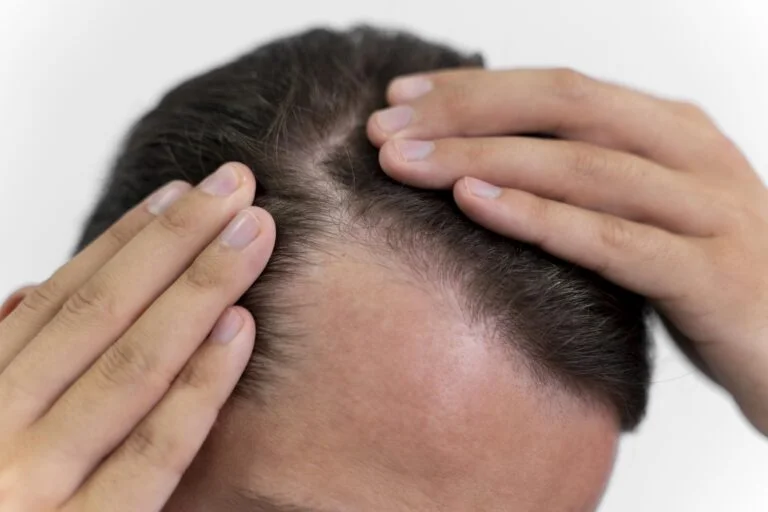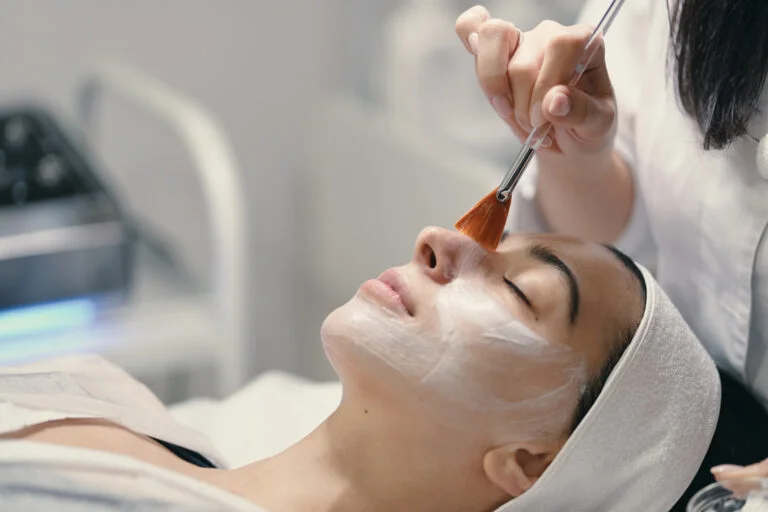Vitiligo is a chronic skin condition marked by the loss of skin pigmentation, resulting in white patches. This occurs when melanocytes, the cells that produce melanin, are destroyed. While vitiligo affects people of all skin types, its visible impact can be more pronounced in individuals with darker skin. Advances in medical research and technology have introduced innovative vitiligo treatments that provide hope for patients managing this condition.
Understanding Vitiligo
Vitiligo affects approximately 1-2% of the global population and is classified into two main types:
- Segmental Vitiligo: This type affects one area or side of the body and usually appears at a younger age.
- Non-Segmental Vitiligo: The more common type, which presents as symmetrical patches on both sides of the body, often progressing over time.
Vitiligo is believed to have autoimmune, genetic, and environmental triggers. While the condition isn’t life-threatening, it can significantly impact emotional well-being and quality of life.
Traditional Treatments for Vitiligo
Historically, vitiligo treatments focused on halting its progression or restoring skin pigmentation. Common approaches included:
- Topical Corticosteroids: Reduce inflammation and may stimulate repigmentation.
- Topical Calcineurin Inhibitors: Often used for sensitive areas like the face, these are safer alternatives to steroids.
- Phototherapy: Narrowband UVB (nbUVB) is a standard treatment for widespread vitiligo, promoting melanocyte activity.
- Skin Camouflage: Makeup or self-tanning products can mask depigmented areas.While these methods have helped many patients, they often require a long-term commitment and may yield inconsistent results.
While these methods have helped many patients, they often require a long-term commitment and may yield inconsistent results.
Advances in Vitiligo Treatment
Recent innovations are changing the landscape of vitiligo care, offering more targeted and effective medical dermatology services.
1. Excimer Laser Therapy
The excimer laser delivers concentrated UVB light directly to depigmented areas, stimulating melanocytes without exposing the surrounding skin. This precision reduces the risk of side effects and is particularly effective for small, localized patches.
Advantages: Faster results compared to traditional phototherapy.
Limitations: Best suited for limited areas of vitiligo.
2. JAK Inhibitors
Janus kinase (JAK) inhibitors are a groundbreaking treatment for vitiligo. These oral or topical medications target the immune response involved in destroying melanocytes.
Effectiveness: JAK inhibitors have shown promise in halting disease progression and promoting re-pigmentation, particularly when combined with light therapy.
Examples: Ruxolitinib cream (recently FDA-approved for non-segmental vitiligo) has become a game-changer in vitiligo management.
3. Skin Grafting and Melanocyte Transplantation
For patients with stable vitiligo, surgical options like skin grafting or melanocyte transplantation offer permanent solutions.
Procedure: Healthy skin or melanocytes are transplanted to depigmented areas.
Results: Repigmentation can be natural and long-lasting, but these procedures require expertise and are best suited for localized vitiligo.
4. Microneedling with Growth Factors
Microneedling creates micro-injuries in the skin, stimulating melanocyte activity and encouraging repigmentation. When combined with exosomes, growth factors, or platelet-rich plasma (PRP), the results are enhanced.
Benefits: This minimally invasive technique can be combined with other treatments like phototherapy for optimal outcomes.
5. Depigmentation Therapy
For patients with extensive vitiligo covering more than 50% of the body, depigmentation therapy is an option. This treatment involves the removal of remaining pigment to create an even skin tone.
Agents Used: Monobenzone is commonly used for this purpose.
Considerations: This is a permanent solution and requires careful counseling before proceeding.
6. Psychological and Emotional Support
Advanced vitiligo care isn’t limited to physical treatments. Integrating psychological support is crucial for addressing the emotional impact of vitiligo.
Counseling and Support Groups: Help patients cope with the social and psychological aspects of living with vitiligo.
Cognitive Behavioral Therapy (CBT): Proven to improve self-esteem and reduce stress, which can influence disease progression.
Emerging Therapies in Vitiligo
Ongoing research is uncovering novel approaches to vitiligo treatment.
1. Stem Cell Therapy
Stem cell research holds significant promise for vitiligo. By regenerating damaged melanocytes, stem cell therapies aim to restore pigmentation naturally. While still experimental, initial results are encouraging.
2. Gene Therapy
Targeting genetic factors contributing to vitiligo is another frontier in treatment. Gene editing techniques like CRISPR may one day offer precise solutions for reversing the condition.
3. Oral and Systemic Therapies
New oral therapies targeting the immune system are under investigation. These include biologics used in other autoimmune conditions, such as atopic dermatitis and alopecia areata, which could be adapted for vitiligo.
Combination Therapies for Optimal Results
Combining advanced treatments often yields the best outcomes. For instance:
- JAK inhibitors paired with nbUVB therapy accelerate repigmentation.
- Microneedling combined with topical corticosteroids enhances pigment restoration.
- The excimer laser used alongside melanocyte transplantation improves surgical outcomes.
- This tailored, multi-modal approach ensures patients receive the most effective care for their specific needs.
Vitiligo and Skin of Color
Vitiligo presents distinct challenges for individuals with skin of color due to the sharp contrast between depigmented patches and surrounding skin. This contrast often makes the condition more noticeable, leading to increased social stigma, emotional distress, and a greater need for personalized care.
In skin of color, vitiligo also poses unique treatment considerations. The higher melanin levels in darker skin types increase the risk of post-inflammatory hyperpigmentation (PIH) or scarring during treatment. For this reason, dermatologists must adopt gentle, tailored approaches to minimize these risks while maximizing treatment outcomes.
Patient-Centered Care in Vitiligo Treatment
Advanced vitiligo care emphasizes a holistic, patient-centered approach. Dermatologists consider factors like the patient’s age, skin type, extent of vitiligo, and personal preferences when designing treatment plans.
Key Aspects of Patient Care:
Personalized Treatment Plans: Customizing therapies ensures better outcomes and patient satisfaction.
Ongoing Monitoring: Regular follow-ups help assess progress and make necessary adjustments.
Education and Empowerment: Informing patients about treatment options and self-care fosters active participation in their care.
Finding Hope and Confidence in Treatment
While there’s no definitive cure for vitiligo, advanced treatments are offering new hope. Patients now have access to therapies that not only improve skin appearance but also boost confidence and overall well-being.
Dermatologists specializing in vitiligo play a crucial role in guiding patients through their treatment journey. By staying updated on the latest advancements and prioritizing patient care, they can make a meaningful difference in the lives of those affected by vitiligo.
Conclusion
Vitiligo treatment has come a long way, with advanced options transforming outcomes for patients worldwide. From innovative therapies like JAK inhibitors and excimer lasers to emerging possibilities in stem cell and gene therapy, the future of vitiligo care is brighter than ever.
A patient-centered, multi-modal approach ensures that treatment is effective, safe, and tailored to individual needs. With the support of skilled dermatologists and ongoing advancements, individuals with vitiligo can regain pigmentation, confidence, and quality of life. This is especially true for patients with black or brown skin who suffer from vitiligo as the skin contrast is even more pronounced.
Whether you’re seeking medical treatment, emotional support, or both, there’s never been a better time to explore the options available for managing vitiligo. Reach out to a dermatologist specializing in vitiligo to discuss the best solutions for your journey to healthier, more even-toned skin.
At Trillium Dermatology Clinic Chapel Hill, we offer advanced clinical practitioners who’ve dedicated their professional careers to ensuring their clients benefit from the most advanced treatments for radiant, clear skin. In addition to many advanced aesthetic treatments, this dermatologist-led clinic provides treatments for all dermatological medical conditions, including acne, eczema, psoriasis, vitiligo, precancerous and cancerous moles, and more.
If you are suffering from vitiligo and want to benefit from cutting-edge treatments, Trillium Clinic can offer you the best dermatologist in Chapel Hill.








